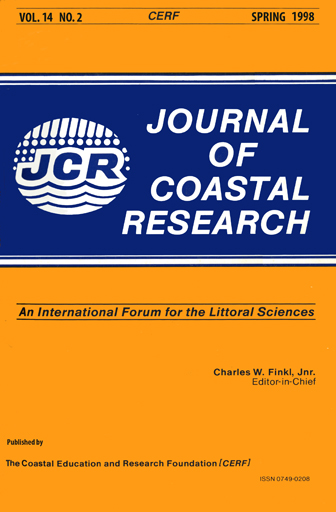Physical Impact of Waves on Adjacent Coasts Resulting from Dredging at Sandbridge Shoal, Virginia
Keywords:
ocean dredging, environmental impact, wave energy, control erosion, beach erosion, sand transportAbstract
The possible changes of breaking wave heights, breaking wave angles, and associated longshore sediment transport along a resort strip from Virginia Beach to Sandbridge, Virginia, caused by a possible dredging at a shoal about 5 km offshore, were studied. This preliminary study revealed that the possible physical impact of waves on adjacent coasts resulting from the modeled dredging at Sandbridge Shoal, Virginia, is insignificant. The purpose of this dredging is to provide about 1.5 X 106 m3 of beach-quality sand for beach nourishment. Because the minimum water depth at the shoal is about 9 m and the ambient water depth varies from 12 to 15 m, only large waves with long periods would be affected. In this study, three wave conditions (1. wave height, H = 1.9 m and wave period, T = 11.8 sec; 2. H = 3 m and T = 14 sec; and 3. H = 6.2 m, T = 20 sec) with six possible directions were studied to check the change of breaking wave conditions as well as the longshore-sediment-transport rates. The calculated changes of breaking wave height along this coast vary from 2 to 7% which is about the same as the accuracy of the wave measurement system, 5%. Accordingly, the possible changes of longshore sediment transport rates would be altered slightly. This study also demonstrates a significant wave energy convergence near Sandbridge for long period waves coming from NE. This natural phenomenon may be responsible for the severe beach erosion in the vicinity of Sandbridge.


